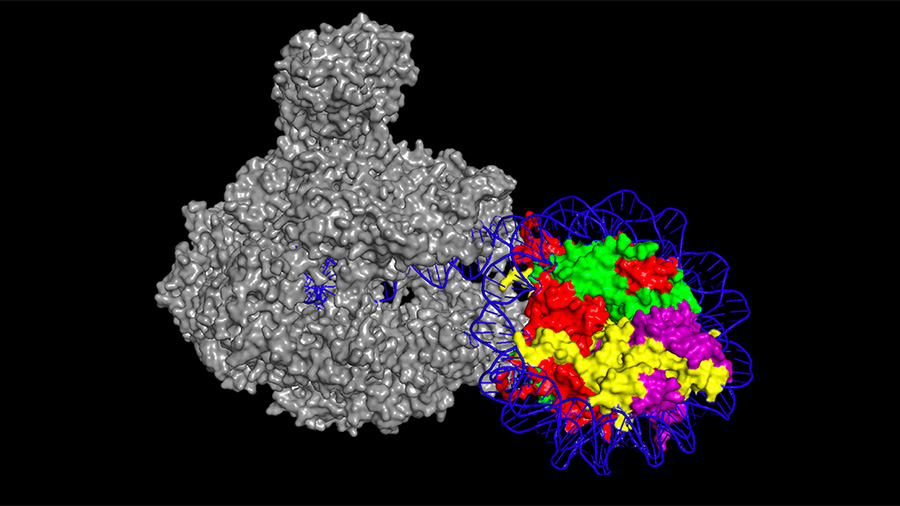Senior Adrien Tyler’s 2024 A&S Symposium project “Contains Multitudes” is a product of months or even years of research and dedication. Students start with an interest in a subject, then connect with a faculty mentor to learn more about the process behind it. Senior Cameron Peterson said his inspiration came from free time, their notebook and personal movie tastes.
#SCIENCE #English #UA
Read more at The Collegian — University of Richmond
SCIENCE
News in English

researchers in the US are the first to successfully create hybrid brains of 2 different species using a technique called blastocyst complementation. This is the first time an animal has been able to use the sensory apparatus of another to sense and respond accurately to the world.
#SCIENCE #English #BG
Read more at Cosmos
#SCIENCE #English #BG
Read more at Cosmos

Ann Tong DKU held its fourth annual Academic Awards ceremony on Friday, April 27. Dean of Undergraduate Studies Marcia France described the ceremony as an opportunity to acknowledge DKU’s top academic performers from this year. France, who will be leaving her position as Dean at the end of this semester to take up a position as Provost at a Vietnamese University, emphasized that while the ceremony could not recognize every student by name, she recognizes the collective efforts of all students.
#SCIENCE #English #GR
Read more at Sites@Duke
#SCIENCE #English #GR
Read more at Sites@Duke

In a new study, scientists report that deep-sea corals that lived 540 million years ago may have been the first animals to glow, far earlier than previously thought. Today, marine creatures that glimmer include some fish, squid, octopuses, jellyfish, even sharks — all the result of chemical reactions. For corals, scientists aren't sure if this luminous reaction is meant to attract or repel other organisms, or perhaps both
#SCIENCE #English #SE
Read more at The Daily Progress
#SCIENCE #English #SE
Read more at The Daily Progress

Scientists detected the first long-predicted gravitational wave in 2015. But the Earth is warm and seismically noisy, and that will always limit the effectiveness of Earth-based detectors. Earth's atmosphere distorts telescope images and blocks some light, like infrared. The LGWA would consist of four detectors in a PSR crater.
#SCIENCE #English #PT
Read more at Phys.org
#SCIENCE #English #PT
Read more at Phys.org

The panspermia hypothesis suggests that life's building blocks are widespread throughout the cosmos and can travel between different areas in space. Before scientists in lab coats were conducting complex studies, there were philosophers in tunics proposing complex ideas. Anaxagoras, a Greek philosopher from the 5th century BCE, proposed the idea that life exists everywhere in the universe. Other Greek philosophers such as Anaximander and Thales also discussed the philosophical aspects of the pan
#SCIENCE #English #BR
Read more at Express
#SCIENCE #English #BR
Read more at Express

The Ulas family has been the subject of evolutionary fascination for years. Back in the early 2000s, a scientific paper was published on five siblings. In the years following the paper’s publication, Professor Nicholas Humphrey travelled to Turkey to meet with the extraordinary family.
#SCIENCE #English #NO
Read more at indy100
#SCIENCE #English #NO
Read more at indy100

A recent study by the University of Amsterdam sheds light on a significant aspect of this dynamic: how trust in scientists can differ vastly based on their field of work. By including 45 different scientific disciplines, the researchers provided a comprehensive picture of public perceptions of scientists ranging from agronomists to zoologists. The results painted an intriguing picture. Neuroscientists and marine biologists topped the trust rankings, while economists and political scientists received lower scores.
#SCIENCE #English #HU
Read more at Earth.com
#SCIENCE #English #HU
Read more at Earth.com

The ASBMB Annual Awards are given to outstanding professionals who have been recognized by their peers for contributions to their fields, education and diversity. April 30: Apply for microgrants for civic engagement Research!America's Civic Engagement Microgrant Program supports "projects that create dialogue with public officials, local community leaders and the public. Learn more. May 15: Apply to be a member of eLife's Early-Career Advisory Group The National Institute of Neurological Disorders and
#SCIENCE #English #SN
Read more at ASBMB Today
#SCIENCE #English #SN
Read more at ASBMB Today

Odd Radio Circles (ORCs) were discovered by accident in 2019. They are circular regions of faint, edge-brightened radio emissions that are invisible at optical, infrared, ultraviolet and X-ray wavelengths. Some have a galaxy at the centre while others don’t, but they’re all characterised by their large size, many times bigger than a typical galaxy.
#SCIENCE #English #FR
Read more at BBC Science Focus Magazine
#SCIENCE #English #FR
Read more at BBC Science Focus Magazine
